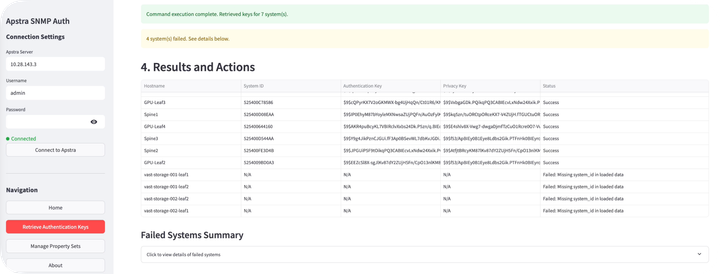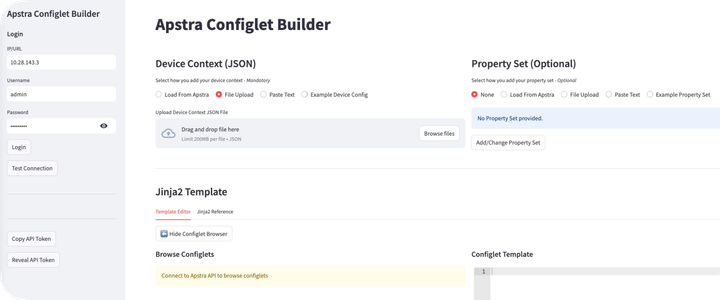
Automating Juniper Apstra: From Raw API to Terraform
Introduction
When automating Juniper Apstra's Intent-Based Networking (IBN) platform, teams have several approaches: using the REST API directly, leveraging the Python SDK (pyapstra), using Ansible with the URI module, or implementing Infrastructure as Code with the Terraform provider. Let's explore each approach.
The Raw API Approach
What It Is
Direct interaction with Apstra's RESTful API endpoints, handling authentication, requests, and responses manually.
Example Implementation
import requests
import json
def create_blueprint():
# Authentication
auth_response = requests.post(
'https://apstra.example.com/api/aaa/login',
json={
'username': 'admin',
'password': 'password'
},
verify=False # For self-signed certs
)
token = auth_response.json()['token']
# Create blueprint
headers = {
'AuthToken': token,
'Content-Type': 'application/json'
}
blueprint_data = {
"label": "dc1_blueprint",
"reference_architecture": "dc_template",
"init_type": "template"
}
response = requests.post(
'https://apstra.example.com/api/blueprints',
headers=headers,
json=blueprint_data
)
return response.json()
The Python SDK Approach
What It Is
The official Juniper Apstra Python SDK provides a Pythonic interface to Apstra's functionality, handling authentication and API interactions.
Pros (Additional to previous)
- Purpose-built for Apstra
- Handles authentication automatically
- Built-in error handling for Apstra-specific cases
- Maintains session management
Example Implementation
from pyapstra.client import Client
def create_blueprint():
# Initialize client
client = Client(
server="apstra.example.com",
port=443,
user="admin",
password="password",
verify=False
)
# Create blueprint
blueprint = client.blueprints.create(
label="dc1_blueprint",
reference_architecture="dc_template",
init_type="template"
)
return blueprint.id
The Ansible Approach
What It Is
Using Ansible's URI module to interact with Apstra's API in a declarative way through playbooks.
Additional Pros
- Integrates with existing Ansible workflows
- Can combine with other network automation tasks
- Reusable playbooks for common tasks
Example Implementation
---
- name: Create Apstra Blueprint
hosts: localhost
gather_facts: no
vars:
apstra_host: "https://apstra.example.com"
blueprint_name: "dc1_blueprint"
tasks:
- name: Login to Apstra
uri:
url: "{{ apstra_host }}/api/aaa/login"
method: POST
body_format: json
body:
username: "admin"
password: "password"
validate_certs: no
register: login_response
- name: Create Blueprint
uri:
url: "{{ apstra_host }}/api/blueprints"
method: POST
body_format: json
body:
label: "{{ blueprint_name }}"
reference_architecture: "dc_template"
init_type: "template"
headers:
AuthToken: "{{ login_response.json.token }}"
validate_certs: no
register: blueprint_response
The Terraform Approach
What It Is
Using Juniper's official Terraform provider for Apstra to manage infrastructure as code.
Additional Pros
- Purpose-built for Apstra
- Handles API complexity
- Built-in state management for Apstra resources
- Declarative approach to network intent
Example Implementation
# Configure the Apstra Provider
provider "apstra" {
url = "https://apstra.example.com"
username = "admin"
password = "password"
tls_validation_disabled = true
}
# Create a Blueprint
resource "apstra_datacenter_blueprint" "dc1" {
name = "dc1_blueprint"
template = "dc_template"
# Optional: Configure additional blueprint properties
networks = {
"spine_leaf_link" = {
ipv4_enabled = true
ipv4_pool = "spine_leaf_pool"
}
}
}
# Deploy the Blueprint
resource "apstra_blueprint_deployment" "dc1_deploy" {
blueprint_id = apstra_datacenter_blueprint.dc1.id
comment = "Deployed via Terraform"
}
Real-World Decision Making for Apstra Automation
Consider these Apstra-specific factors when choosing:
-
Use Case Complexity
- Complex datacenter automation with granular control → Python SDK
- Complex datacenter automation with cloud like approach→ Terraform
- One-off tasks → Ansible
- Custom integration needs → Raw API
-
Team Skills
- Network engineers familiar with Python → SDK
- Infrastructure teams using Terraform → Terraform provider
- Existing Ansible automation → Ansible URI approach
-
Scale of Operation
- Single datacenter → Any approach
- Multiple datacenters → Terraform, SDK, API
- Mixed with other automation → Ansible
- Custom workflow needs → SDK, API
-
Change Management Requirements
- Strict change control → Terraform (plan/apply workflow)
- Less strict changes unless enforced → SDK or Ansible
- Integration with other systems → API
- Audit requirements → Terraform
Conclusion
For Apstra automation, each approach has its merits:
- Terraform provides the most robust infrastructure-as-code experience
- The Python SDK offers the most programmatic control
- Ansible integrates well with existing network automation
- The raw API provides the most flexibility
Many organisations use a combination:
- Terraform for infrastructure and blueprint management
- SDK for custom tooling and integration
- Ansible for operational tasks
- API for specialised needs
The key is choosing the right tool for your specific requirements while maintaining consistency and reliability in your network automation strategy.



Comments ()